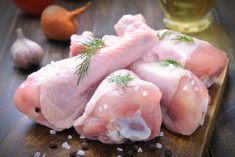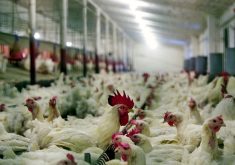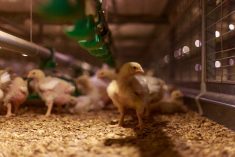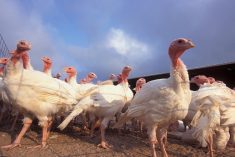Chicago | Reuters –– The U.S. government on Thursday reduced its forecasts for poultry exports by nearly six per cent from last month due partly to an accelerating outbreak of bird flu that has triggered wider-than-expected trade restrictions.
The steep cuts came as the U.S. Department of Agriculture confirmed a second commercial flock of turkeys in South Dakota has been infected with the H5N2 flu, which can kill nearly an entire flock of poultry in 48 hours.
Birds in eight other states have tested positive for the same lethal strain since the beginning of the year, prompting key overseas buyers such as Mexico and Canada to limit imports of U.S. poultry and eggs from states and counties with infections.
Read Also

China holds off on soybean purchases due to high Brazil premiums, traders say
China has yet to secure much of its soybean supply for December and January as high premiums for Brazilian cargoes discourage buyers.
The most damaging restrictions to the $5.7 billion U.S. export market have been countrywide import bans imposed by China and South Korea (all figures US$).
“We didn’t expect China or South Korea really to take as severe, drastic action as they did,” said Jim Sumner, president of the USA Poultry and Egg Export Council.
Last year, China and South Korea accounted for about $428.5 million in export sales of poultry meat and products, according to USDA data.
The USDA, in a monthly supply and demand report, dropped its estimate for turkey exports in 2015 to 720 million pounds from 765 million in March and 804 million last year. Exports for broiler chickens were pegged at 6.68 billion lbs., down from 7.1 billion last month and 7.3 billion last year.
Strength in the U.S. dollar, which makes U.S. farm products less attractive to overseas buyers, makes it difficult for exporters to expand business in the face of trade restrictions due to bird flu, USDA said.
The number of U.S. infections in poultry has been climbing as migratory ducks, which are believed to be spreading the virus, are traveling to northern states after spending the winter farther south, experts said.
A turkey farm in southwestern Ontario was confirmed earlier this week with H5N2, marking Canada’s first case of that specific strain in poultry since last December’s outbreaks in British Columbia.
The latest inflected flock of 34,000 turkeys in South Dakota will be culled to prevent the spread of the disease, according to USDA. No human infections have been detected.
— Reporting for Reuters by Tom Polansek in Chicago.
















